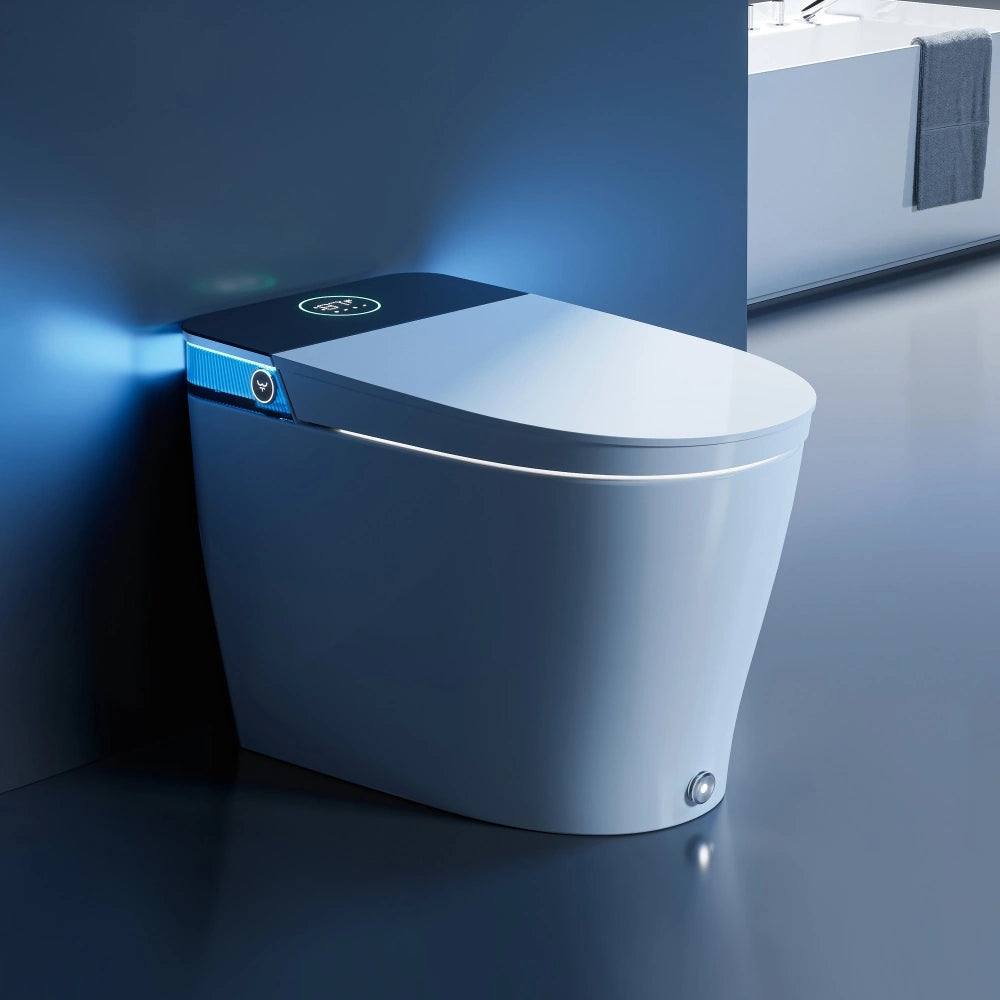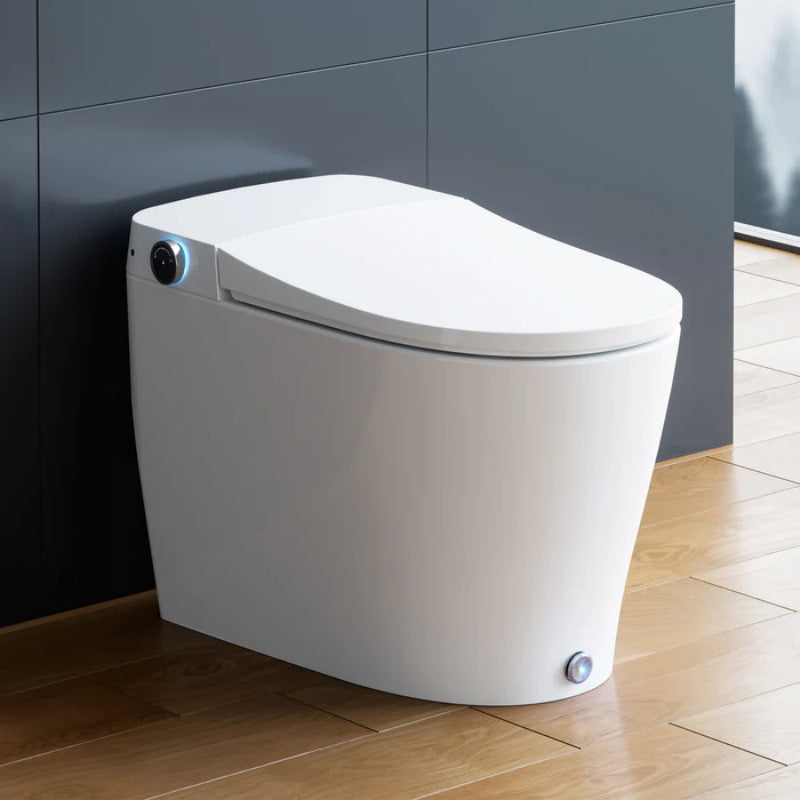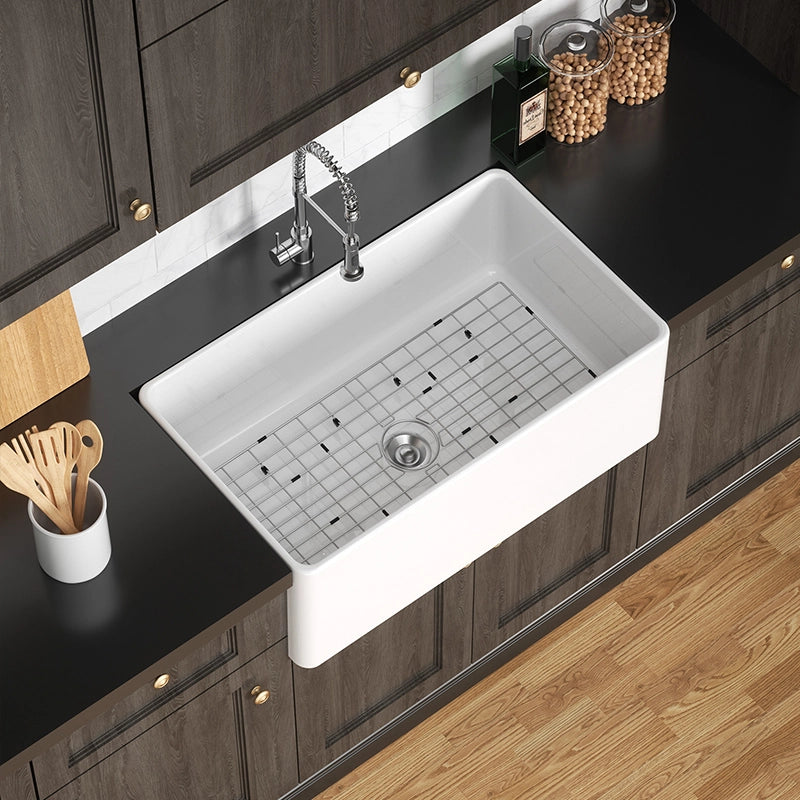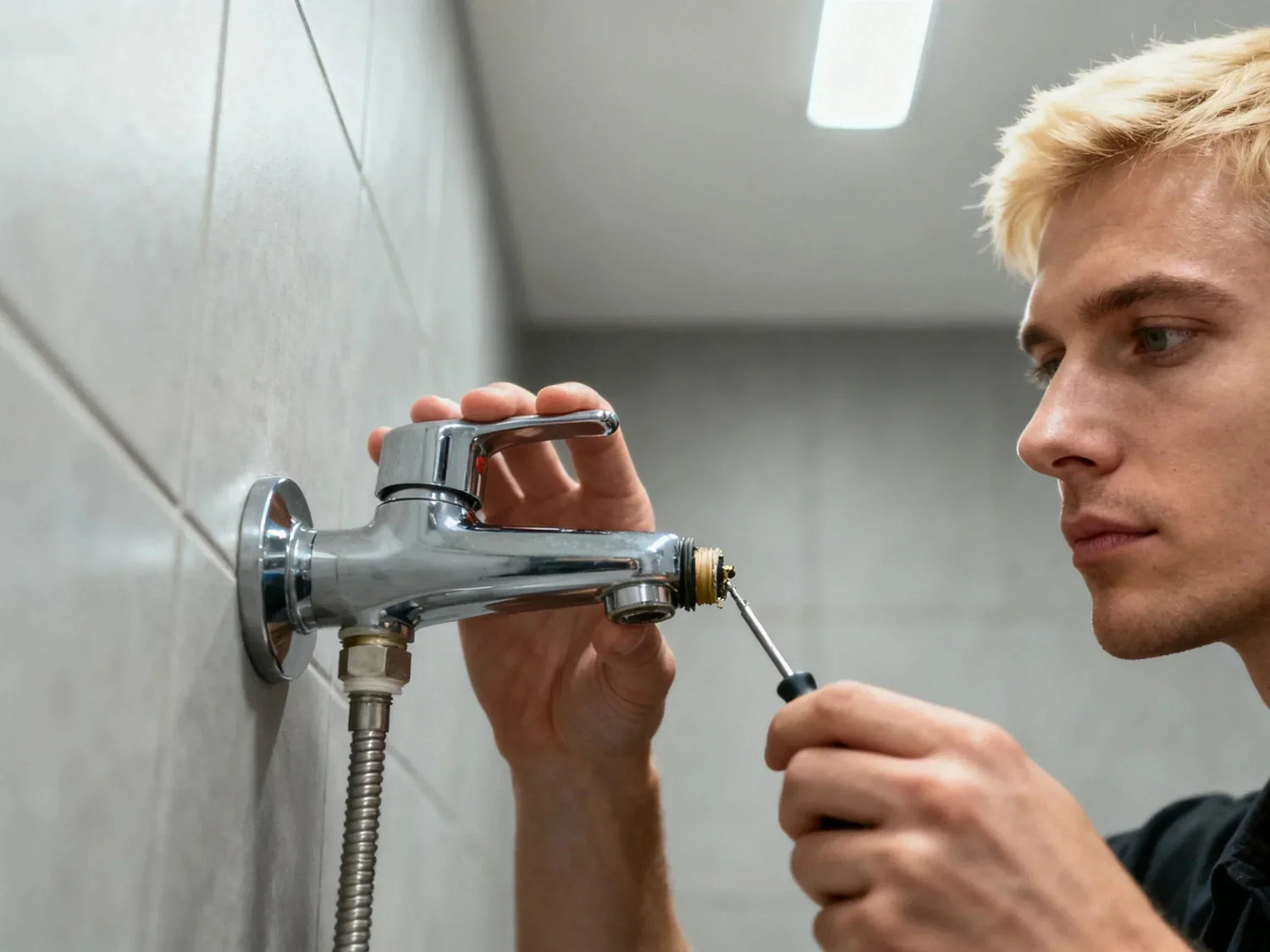A smooth, easy-turning faucet makes daily life better. When a faucet handle feels loose, looks outdated, or squeaks and sticks, a faucet handle replacement is often the fastest fix. It’s a simple repair most people can finish in under 30 minutes with basic tools, and the parts usually cost $10–$40. Changing bathroom faucet handles or a kitchen faucet handle can also stop minor drips if the handle is the cause, restore clean design lines, and make the space feel fresh.
This guide gives you the quick facts first. Then you’ll get a printable checklist, a clear step-by-step for both single-handle and two-handle setups, smart troubleshooting for stuck or misfitting handles, brand-agnostic nuances (like hidden set screws), and a simple cost/time calculator. You’ll also see how to match materials and finishes, add accessibility with lever handles, and keep everything working longer with easy maintenance. If you’ve wondered things like “Can I just replace faucet handles?” or “Are faucet handles universal?” you’ll find straight answers here.
Quick Answer: Time, Cost, Difficulty, and Tools
Before you dive into the full walkthrough, here’s a fast snapshot to help you understand what to expect and how simple this project can be.
At a glance: 10–30 minutes, $10–$40 DIY vs $80–$200 pro
-
Time: 10–20 minutes for a standard handle swap; 20–30 minutes if parts are stuck or corroded.
-
Cost: $10–$40 for most handle kits; a plumber visit often runs $80–$200 for the same replacement.
-
Difficulty: Easy to moderate. If you can use a screwdriver and an Allen key (hex wrench), you’re set.
-
Typical savings: $60–$180 per handle compared to hiring out.
-
Success rate: High for everyday faucet and handles; patience matters if the old handle is stuck.
-
Time: 10–20 minutes for a standard handle swap; 20–30 minutes if parts are stuck or corroded.
-
Cost: $10–$40 for most handle kits; a plumber visit often runs $80–$200 for the same replacement.
-
Difficulty: Easy to moderate. If you can use a screwdriver and an Allen key (hex wrench), you’re set.
-
Typical savings: $60–$180 per handle compared to hiring out.
-
Success rate: High for everyday faucet and handles; patience matters if the old handle is stuck.
Essential tools you’ll need
-
Flathead and Phillips screwdrivers
-
Allen key (often 2–3 mm or 1/8 in for a single handle set screw)
-
Adjustable wrench or small socket set
-
Towel or cloth to protect the sink and finishes
-
Flashlight or headlamp
-
Optional: plastic pry tool, white vinegar, penetrating oil, hair dryer, silicone-based plumber’s grease
Safety first: shutoff valves and water drain
-
Turn off the water supply at the shutoff valves beneath the sink. If there aren’t local shutoffs, turn off the main.
-
Open the faucet to relieve pressure and drain the line.
-
Protect the base and surrounding finish with tape or a cloth to prevent scratches.
-
Keep a small tray for screws, caps, and adapters so nothing rolls away.
Faucet Handle Replacement: Quick-Start Checklist
Once you know the basics, this quick-start list gets you prepped and organized so you can move straight into the replacement without missing key steps.
Interactive checklist
-
Verify your model or measure the stem and note the broach shape.
-
Turn off the water and open the faucet to relieve pressure.
-
Locate and remove the decorative cap; remove the top screw or loosen the set screw (for levers).
-
Lift off the old handle; keep the old screw and cap in case the new one doesn’t include them.
-
Test-fit the new handle; use provided adapters if needed; confirm hot and cold water orientation.
-
Tighten the screw or set screw. Do not overtighten. Snap the decorative cap back on.
-
Open shutoff valves slowly. Test water flow, check for leaks, and confirm full smooth motion.

Parts to prep: universal handle kits, adapters, broach sizes
Most “universal” handle kits include small adapter pieces to match common stem shapes and sizes. The “broach” is the ridged or slotted profile at the top of your valve stem. Matching this matters for a firm fit. If you don’t know your faucet brand, a universal kit with multiple adapters simplifies the selection. Keep old screws, caps, and any spacers you remove; sometimes the new kit won’t include every small piece.
Common variants you’ll encounter
You’ll see three common setups:
-
A single-lever kitchen faucet with a small set screw hidden underneath or at the back of the handle.
-
Two separate knobs on a bathroom faucet with a top decorative cap that hides a Phillips screw.
-
Ceramic disc vs compression stems. Ceramic disc systems turn less and feel smooth. Compression styles use rubber washers and often turn more.
Table: Handle type vs fastener vs tool
| Handle type | Fastener location | Common tool required |
| Single-handle lever | Underside or back set screw | Allen key (2–3 mm or 1/8 in) |
| Two-handle round knob | Hidden top screw under cap | Phillips screwdriver |
| Two-handle lever | Top screw under cap or side set screw | Phillips or Allen key |
| Vintage cross handle | Top screw visible or under cap | Phillips or flathead |
Step-by-Step: How to Replace a Faucet Handle (Kitchen & Bath)
With your tools ready and prep done, follow this clear process to remove old handles and install new ones confidently on any faucet style.
Remove the old handle (two-handle and single-handle)
Two-handle knobs:
-
Pop the small “H” or “C” decorative cap with a plastic pry tool or your fingernail. Work slowly to avoid damage.
-
Remove the Phillips screw beneath the cap.
-
Pull the knob straight up. If it resists, wiggle gently while pulling. Do not pry against the base with metal.
Single-handle levers:
-
Feel for a tiny hole or slot at the bottom or back of the lever. This hides the set screw.
-
Insert the right Allen key and turn counterclockwise to loosen. You may not need to remove it fully.
-
Slide the lever off the stem. If it sticks, add a drop of penetrating oil and wait a few minutes, then try again.
Tip: If the handle won’t budge, a warm hair dryer for 30–60 seconds can expand metal slightly. A brief vinegar soak on mineral crust can help too.
Identify your stem/cartridge and confirm fit
Look at the top of the stem or cartridge where the handle seats. Note the broach shape (square, hex, 12-point, 16-point, etc.) and the size. If your replacement kit includes adapters, test which one seats snugly with no rocking. If you feel gritty motion, see seepage around the hole, or the handle never fully shuts off water, the issue may be inside the cartridge. In that case, plan a cartridge replacement as well. It’s still safe to fit a new handle, but it may not fix a drip.
Install and align the new handle
Place the new handle over the stem and seat it fully. For two handles, set left to hot, right to cold. For a single handle, align so “off” rests comfortably and the motion feels natural. Insert the screw or tighten the set screw. Apply only firm hand pressure—tight plus a quarter turn. Overtightening can crack plastic hubs or strip the stem. Snap the decorative cap to cover the fastener.
Turn-on test and calibration
Turn the shutoff valves back on slowly. Open the faucet and let water run for a few seconds. Check for leaks at the base of the handle and around the fastener. Move through the full range of motion. If the handle stops too soon or points the wrong way, remove it, rotate one notch, and retighten. On single-handle models, also check hot and cold water mixing. Adjust alignment so “up/down” or “left/right” makes sense for your sink.

Troubleshooting
If something feels stuck, misaligned, or not fitting right, use this section to diagnose issues quickly and avoid unnecessary frustration.
How do you remove a stuck faucet handle?
-
Soak the joint with white vinegar on a cloth for 10–15 minutes to dissolve mineral build-up.
-
Add a drop or two of penetrating oil at the set screw or stem hub; wait 5–10 minutes.
-
Warm metal with a hair dryer for 30–60 seconds; avoid open flames.
-
Wiggle and pull straight. Use plastic pry tools only; avoid metal against the finish.
-
If still stuck, stop and reassess. Forcing can crack ceramic discs or snap stems.
Why won’t my new handle fit?
-
The broach shape or size doesn’t match. Use the correct adapter from the kit.
-
A hidden washer or spacer from the old handle is missing; reuse it if needed.
-
The set screw location on the new lever doesn’t align with your stem’s flat. Rotate the handle or choose a different adapter.
-
The faucet uses a brand-specific stem pattern. Check the parts diagram online or bring the old handle to a store to match a kit.
Do I need to replace the cartridge too?
You might if you notice:
-
Persistent leaks after the handle replacement
-
Gritty or rough motion when turning
-
Uneven temperature control on a single handle Before swapping, tighten the fastener, verify alignment, and make sure adapters are fully seated. If the issue remains, a cartridge refresh is a good next step.
Wobbly or squeaky after install
-
Tighten the set screw firmly but don’t overdo it.
-
Add a small dab of silicone-based plumber’s grease on moving points (avoid petroleum on rubber parts).
-
Check that the handle is seated fully and not bottoming on the escutcheon or base.
-
Confirm the adapter (if used) matches the stem profile with no play.
Visual: Decision path—Is the handle loose? Check fastener. Still loose? Check adapter match. Squeaks? Grease the moving interface. Leaks? Inspect cartridge and stem seals.
Brand & Model Nuances
Even without naming brands, you’ll notice patterns that help you work faster.
Set-screw locations and sizes
Most single-handle levers hide a small set screw:
-
Location: underside of the lever tip, back of the handle, or side of the hub
-
Common sizes: 2.0 mm, 2.5 mm, 3.0 mm, or 1/8 in Allen
-
Less common: Torx or tiny Phillips on some older handles
If your handle has no visible top screw or cap, assume there’s a set screw hidden somewhere around the bottom edge.
Universal handle kits and adapters for older/vintage faucets
If you can’t find the exact part, a universal kit may solve it. Look for:
-
Multiple adapters with different broach profiles
-
A deep hub to clear taller escutcheons
-
A finish that matches your faucet: chrome, brushed nickel, matte black, or brass tone
-
Spare screws and caps, since older handles are used with odd fastener sizes
Single-handle vs two-handle vs ceramic disc considerations
-
Single-handle: Be gentle near the valve body; many use ceramic discs that can crack if you pry hard.
-
Two-handle compression: If you need to crank down hard to stop water, the issue is likely the washer, not the handle.
-
Ceramic disc two-handle: Turn less, feel smooth. If motion is rough, check for mineral scale or a failing cartridge rather than pushing harder.

Cost, Time, and Savings Calculator
To help you plan smarter, this calculator shows what you’ll spend—and how much you can save—when handling the replacement yourself.
DIY vs pro: what you’ll spend and save
-
Parts: $10–$40 per handle kit for most homes
-
Labor (pro): $80–$200 typical per visit or per handle
-
Multi-handle example: Replacing three handles yourself could save $180–$480 in labor
Time estimates by faucet type and skill level
-
Standard two-handle knob: 10–15 minutes each
-
Single-handle lever with easy access: 15–20 minutes
-
Corroded or stuck parts: 20–30 minutes
Interactive: cost/time ROI calculator
Use this simple method:
-
Count how many handles you’re replacing (N).
-
Estimate your parts cost per handle (P, default $25).
-
Estimate your local labor rate for the job (L, default $150).
-
Savings = N × (L − P).
-
Time = N × 20 minutes (adjust for your skill).
Example: Two kitchen faucet levers, parts at $25 each, local labor $150. Savings = 2 × ($150 − $25) = $250. Time = 2 × 20 = 40 minutes.
Mini case studies
-
Bathroom quick swap: A loose cold knob with a top cap screw took 12 minutes start to finish. Total cost: $18. The owner reused the original screw because the kit didn’t include a cap.
-
Single-handle with corrosion: A faucet handle stuck to the stem needed a vinegar wrap and warm air. Total time: 28 minutes. Cost: $29. Smooth motion restored, no leaks.
Materials, Finishes, Ergonomics, and Sustainability
Choosing the right handle involves more than fit alone; this section breaks down durability, comfort, long-term value, and eco-friendly considerations.
Metal vs plastic handles: durability vs budget
Metal handles feel solid, resist scratches better, and match premium finish lines. Plastic handles are budget-friendly and fine for low-traffic sinks, but they can yellow or crack if overtightened. If you live with hard water, metal with a durable coating is easier to keep clean and stain-free. For small kids or guest baths, plastic can be a safe pick because it’s lighter and less likely to chip porcelain if dropped.
ADA-compliant levers and accessibility upgrades
Lever handles need less grip and less force, which helps kids, seniors, and anyone with limited hand strength. If you want an ADA-friendly setup, choose levers with a long, easy-to-grab profile and smooth edges. These reduce strain and improve access for all users without changing the faucet itself.
Finish matching and care
-
Chrome: Bright and classic; easy to clean with a soft cloth.
-
Brushed nickel: Hides fingerprints; gentle soap and water do the job.
-
Matte black: Modern look; avoid abrasive pads and strong chemicals. To keep any finish looking new, wipe water spots weekly and avoid harsh powders. A quick vinegar mist (then rinse) helps with mineral spots on chrome—just don’t soak seals.

Lead-free materials and water efficiency context
Modern fixtures and parts in contact with drinking water must meet lead-free rules. If you’re upgrading a lot of components, check labels that state lead-free compliance. While a handle swap won’t change flow rate, it’s a good time to think about a WaterSense-labeled faucet in the future to cut water use.
Comparison table—materials, finish durability, care level
| Material/Finish | Durability | Care level | Notes |
|---|---|---|---|
| Metal, chrome | High scratch resistance | Low | Shiny; shows water spots; easy to polish |
| Metal, brushed | High | Low–Medium | Hides prints; wipe along grain |
| Metal, matte | Medium–High | Medium | Avoid abrasives; gentle cleaners |
| Plastic, chrome-look | Low–Medium | Low | Budget pick; don’t overtighten |
Common Pitfalls and Pro Tips from the Field
Avoid the mistakes that cause most delays or damage—these field-tested insights help you work cleaner, safer, and faster.
Avoid overtightening and cracked stems
It’s easy to crank a screw too hard. The safe rule: snug, then a quarter turn. If the handle still rocks, you may have the wrong adapter or the screw isn’t seating. Pushing harder often breaks something.
Protect your faucet and sink surfaces
Wrap pliers with tape, use cloth under tools near the base, and avoid metal prying on decorative caps. A plastic pry tool or even a guitar pick works well to “pop” caps without scratches.
Smart prep to prevent mid-project delays
Do a test-fit with the new handle before removing the old one fully. Snap a quick photo during disassembly so you remember the process and order of parts. Keep a small tray or magnet mat for tiny screws.
Social-verified tips for tricky jobs
If the handle isn’t moving, check for a second fastener. Many levers hide both a cap screw and a set screw. A short blast of warm air helps break mineral bonds, and a vinegar wrap softens crust. If you feel unsure, pause. A slow, careful approach beats force every time.
Maintenance After Replacement and Lifespan
After your new handle is installed, these simple habits will keep it looking sharp and operating smoothly for years.
Routine cleaning to prevent mineral buildup
Wipe handles weekly with a soft cloth. For hard water crust, use a light vinegar solution and rinse. Avoid harsh pads, which can scratch finish and attract more stains later.
Periodic checks for screws and smooth motion
Every few months, check the screw or set screw for tightness and the handle for smooth travel. A tiny bit of silicone-based plumber’s grease on moving contact points can keep motion quiet and easy.
How long should a faucet handle last?
With normal use and care, handles are used for years. Plastic styles may last 3–7 years in busy spaces. Metal levers often last 10+ years. If you see wobble that won’t tighten, cracked hubs, or peeling finish, it’s time to replace.
Step-by-step summary you can follow now
-
Turn off the water. Open the faucet to drain.
-
Remove the decorative cap or locate the set screw.
-
Unscrew and lift off the old handle.
-
Identify the stem broach. Test-fit the new handle and any adapter.
-
Tighten the screw or set screw—snug, not crushing.
-
Restore water flow, check for leaks, and confirm smooth, aligned motion.
To put it simply, a careful faucet handle replacement is a small win that you can do today. It’s a safe, fast upgrade that can restore smooth action, improve the look of your sink, and set you up for easier use for years to come.

FAQs
1. Can I just replace faucet handles?
Yes, you can usually do a faucet handle replacement without changing the entire faucet. Most designs let you swap the faucet valve handle while leaving the internal cartridge intact. This is common in kitchen faucet handle replacement and bathroom setups. Before starting, ensure the new handle matches your stem type; consult the parts diagram if unsure. Many homeowners prefer this upgrade because it’s inexpensive and boosts visual appeal. Just turn off the water, remove the old knob, and install the new one carefully. With the right guidance, you can finish the job quickly.
2. Are faucet handles universal?
Not fully. Handles come in various broach shapes, so a faucet handle replacement requires the correct fit. Universal kits offer multiple adapters to help match different stems, but some brands use unique patterns. Determine your stem shape first, or consult a parts chart to avoid buying components that don’t work together. If your faucet uses a ceramic cartridge or compression valve, the handle design may differ. A quick search for your model can help you identify the right part and features needed for smooth installation.
3. Can you just buy faucet handles?
Yes. You can buy individual handles, sets, or universal kits designed for kitchen faucet handle replacement and bath faucets. When choosing a new one, ensure the style and finish match your space and that the adapters fit your existing stem. Handles are sold apart from cartridges, so replacing only the knob is often all that’s necessary. Many options offer ergonomic levers, metal builds, and upgraded finishes to improve appeal. If uncertain, consult product specs or diagrams before purchasing.
4. Do I need to turn off water to replace a spigot handle?
Yes—always shut off the water before any faucet handle replacement. Even if you’re only swapping a faucet valve handle, turning off the supply prevents leaks and keeps the process clean. Open the faucet afterward to drain excess water. This simple step ensures you can construct the new handle setup safely and carefully. Though the job is simple, every guide will recommend this precaution because accidental sprays can happen quickly during installation. When in doubt, consult your faucet’s manual.
5. How do you remove a faucet handle with no visible screws?
Hidden-set-screw handles are common, especially on levers. To learn how to remove faucet knobs without visible screws, look underneath or behind the handle for a tiny hole that holds a hex screw. Loosen it with the correct Allen key, then pull the handle off the stem. Some models hide a cap you must pry up gently. Work carefully to avoid finish damage. If it’s stuck, warm the metal slightly or apply vinegar to loosen mineral build-up. A quick search of your faucet model can provide extra guidance.
6. Why won’t my faucet handle come off?
A handle may stick because of corrosion, mineral buildup, or a hidden fastener. During faucet handle replacement, ensure you’ve removed every screw or set screw—some faucets include various fasteners. If the handle still won’t budge, apply penetrating oil, warm the handle, or soak the area with vinegar. These steps usually loosen it quickly. If not, the adapter may be wedged or the stem damaged. Consult your faucet manual or parts diagram to determine what’s holding it apart. Avoid forcing it; slow, steady work protects both the finish and the internal components.
References








Leave a comment
This site is protected by hCaptcha and the hCaptcha Privacy Policy and Terms of Service apply.